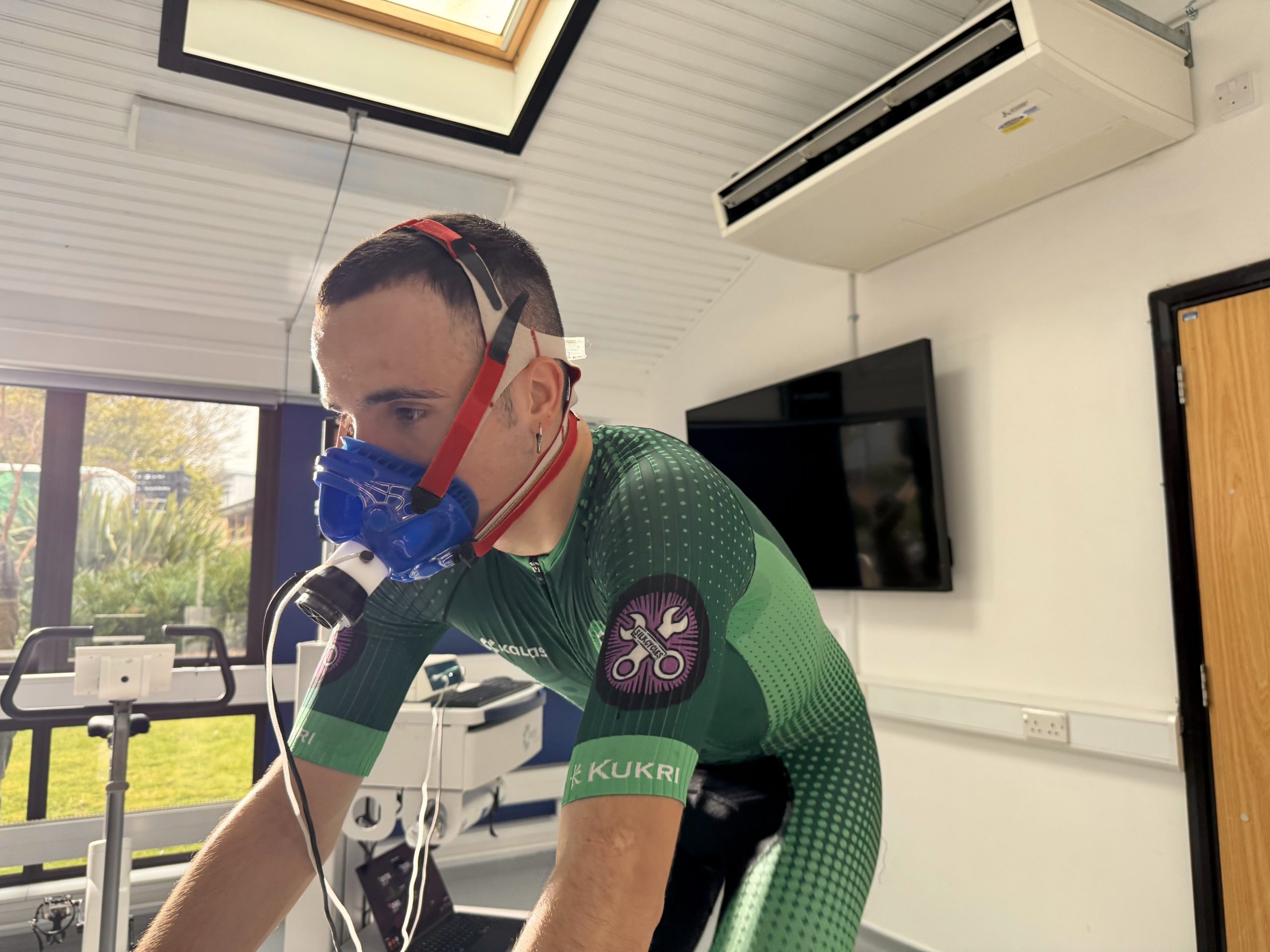Running
Essentials
Get the data that matter the most
Test duration: ~90 minutes
- Determination of your maximal oxygen uptake (VO₂max)
- Determination of your Lactate Thresholds
- Training zones based on Running Pace and Heart Rate
- Exercise economy
- Physiological profiling based on obtained results
Advanced
Have your test data analysed interpreted by leading experts
Test duration: ~90 minutes
- All what you get in the Essentials with addition of:
- Physiological profiling and advice provided by Professor Andy Jones
- Marathon race time prediction
Ultimate
The ultimate way of getting to know your physiology
Test duration: ~120 minutes
- All what you get in the Advanced with addition of:
- Body composition analysis (BodPod)
- 30-min Q&A session with Professor Andy Jones
- Individualised racing and training nutrition recommendations by Dr Tim Podlogar
Glossary
Lactate Thresholds
Lactate thresholds refer to the exercise intensities at which lactate accumulation in the blood increases significantly. They are crucial for setting the training zones.
- Lactate Threshold: Lactate threshold represents the intensity at which blood lactate levels start to rise slightly above baseline. It represents the highest intensity at which the body can primarily rely on aerobic metabolism without significant lactate accumulation. Training just below or at the lactate threshold improves endurance and fat metabolism economy.
- Lactate Turnpoint: Lactate turnpoint is the first speed at which a sudden and sustained increase in blood lactate is seen. At this point your muscles are producing more lactate than your body is able to clear. Lactate turnpoint is very close to Critical Speed (CS) and represents the speed of your maximal steady state (something that you can sustain for quite a while without fatigue).
Training Zones
Training zones are defined intensity ranges based on heart rate, running pace, or blood lactate levels. They guide structured training to maximise performance improvements while balancing recovery.
- Zone 1 (Recovery): Warm-up, cool-down and recovery intensities
- Zone 2 (Easy): Long runs, warm-ups, cool-downs and active recoveries between higher intensity intervals. The primary benefit of running in this zone is that it enables you to run more distance without greatly increasing stress on the body.
- Zone 3 (Steady): At the lower end of the zone, this involves medium to long workouts and at the higher end of the zone, this involves medium to short workouts. All workouts regardless of duration are generally run at a fairly constant pace. When performing a session within this zone, you should become tired as a function of time not the intensity of the session.
- Zone 4 (Tempo): Tempo pace is traditionally defined as the running pace at which the blood lactate begins to ‘spike’ – that is the Lactate Turnpoint. Tempo runs are typically run just above Lactate Turnpoint intensity, at the lower end of the zone and are generally constant pace efforts.
- Zone 5 (Aerobic intervals): The reps and sets of these types of sessions are designed in such a way that during each interval and during the workout there will be an accumulation of blood lactate during the session. The main goal, however, is to maximally challenge the aerobic as opposed to the anaerobic system.
- Zone 6 (Anaerobic intervals): These sessions include high-speed interval running where the intensity is so high (i.e. equal to or faster than 800 m race pace) that the duration is necessarily short. These sessions can be used to develop speed and speed endurance (anaerobic capacity). To keep quality high, recovery periods need to be long.
Maximal Oxygen Uptake
VO₂max represents the maximum rate at which your body can take in, transport, and utilise oxygen during intense exercise. It is a key marker of aerobic endurance and cardiovascular fitness. A higher VO₂ Max generally indicates a greater ability to sustain high-intensity efforts over time.
Exercise Economy
Running economy is a measure of how efficiently your body uses oxygen when running at submaximal speeds. Many factors can affect your running economy, including your biomechanics, proportion of fast- and slow-twitch muscle fibres and numerous anthropometric (body/tendon) measurements.
A Physiological Profiling
A Physiological Profiling analysis in a sports physiology context helps assess an athlete’s physical condition and training strategy based on individual’s test results.
